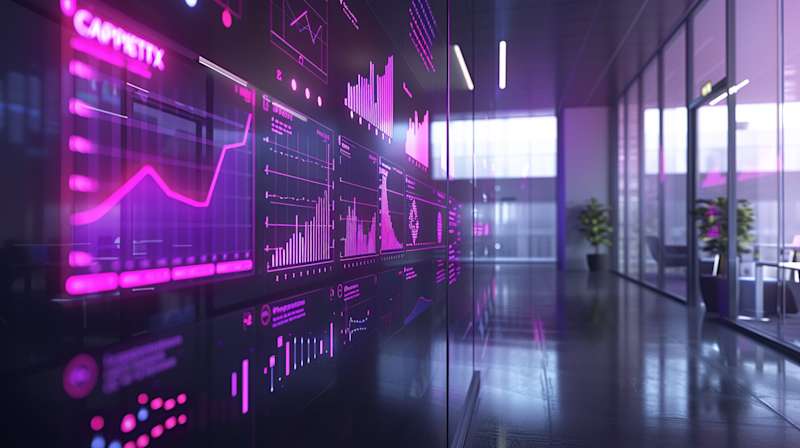The use of alternative materials in construction

The use of alternative materials in construction is on the rise, and here, Senior Cost Manager, Bogdan Svyrydenko discusses a few specific examples, as well as exploring their advantages.
In the drive towards sustainability and efficiency in the construction industry, and efforts to streamline processes and innovate with new technologies, many alternative materials have appeared to replace or supplement traditional materials.
Composite materials in particular have been successfully used in a wide range of applications, and are competing based on their main characteristics:
- Cost
- Weight
- Durability
- Buildability
These characteristics continue to evolve and improve, making these materials more efficient and sustainable to meet current industry requirements. They also have a number of advantageous qualities such as fire resistance, corrosion resistance, and resistance to acids and aggressive materials, on which they can outperform traditional materials such as steel and concrete.
Here, we look at some of the composite materials that are having an impact on the industry, and their applications.
1. Fiberglass reinforcement
This can replace traditional steel reinforcement in sizes from T6 to T50 with its tensile strength being greater than steel. There are a diverse range of applications for this, including but not limited to; ground-bearing concrete slabs/footpaths, airport aprons/runways, retaining walls, embankments, concrete water treatment tanks, bridge decks, screed reinforcement etc. The core benefit is that fiberglass reinforcement is up to 75% lighter than traditional steel reinforcement, which significantly eases logistic activities related to rebar installation on site. Its use has been relatively limited thus far, to Eastern Europe, although it is beginning to become more popular throughout Europe, with widescale use in the USA also.
2. Composite sheet piles
The use of nano-modified polyurethane resins and a high-pressure injection pultrusion method achieves physical characteristics that make composite sheet piles feasible in the following applications; shoreline reinforcement (see top left image below), artificial channels and reservoirs (see top right image below), protection against flooding, slopes and descents reinforcement, berths and pier construction (see bottom left image below), infrastructure facilities, and underground basement/car parking (see bottom right image below). Lighter weights, competitive costs, high resistance to corrosion and acids and the absence of maintenance costs makes this alternative material very attractive in the areas of its possible application.
Looking specifically at the example of basements/carparks, a project’s feasibility can often be improved with the implementation of composite piles, as an innovative solution for the construction of a permanent wall extending from the basement. This means that concrete wall and strengthening sections are no longer required, which achieves both cost and time savings.
The concept of composite piles installation during the construction of underground parking facilities, known as “top-to-down”, offers a number of advantages, such as:
- Initial temporary cofferdam provided
- Watertight finishing wall
- Permanent support walls for the basement and the parking facility
- No second wall required
- The wall is constructed exactly around the perimeter of the parking space, thus maximizing the parking area
- Construction time is reduced substantially
3. Composite wall completion elements
Nano-modified polyurethane resins and a high-pressure injection pultrusion method can be used in the manufacturing of external wall completion elements, such as windows, screens and doors.
Below we look at a number of characteristics of this material, in comparison to traditional PVC and timber materials used:
- Withstands temperatures ranging from -70 °С to +170 °С.
- Simplified frame production due to a smaller number of air chambers, as compared to PVC (high thermal/technical properties).
- The profiles do not need the reinforcing steel elements to be incorporated in order to improve rigidity.
- No gaps are formed as the temperature fluctuates, meaning that there is no need to adjust the fixtures. The window, screen or door functions as the integral structure, because the material’s expansion capabilities are approximately equal to those of glass. This effect means that the sealing elements are particularly robust.
- The elements are durable, with a long life span of around 25 years – they do not corrode, decay, or change color, and no blowholes/scratches are formed on them. The frames are not subject to embrittlement.
- Superb soundproofness.
- High level of strength, making it possible to enlarge the surface of the element, given its robust functionality.

4. Composite metal
The new generation of pipes for domestic and industrial use is bringing about significant advantages. These polymer pipes can be used across a diverse range of applications; on many types of water supply and heating systems (including energy-efficient systems), pipelines for ships and railway wagons and heating of greenhouses etc. They offer increased resistance to delamination for engineering systems, which is achieved by forming an anisotropic relief on the surface of the aluminum layer by a way of plasma impact.
Some of the characteristics of this material include:
• Flexible and memory-shaped, can be welded as polypropylene pipes
• Resistance to stratification is increased threefold
• Operating pressure over 25 bars
• Service life of 100 years
• Temperature expansion, similar to metal
• Non-permeable to oxygen
• Low cost
The abovementioned materials constitute just a handful of the alternative and composite materials available. They offer distinct benefits for a broad range of construction projects, including cost savings and durability, and we will see the use of such materials increasing in years to come.







